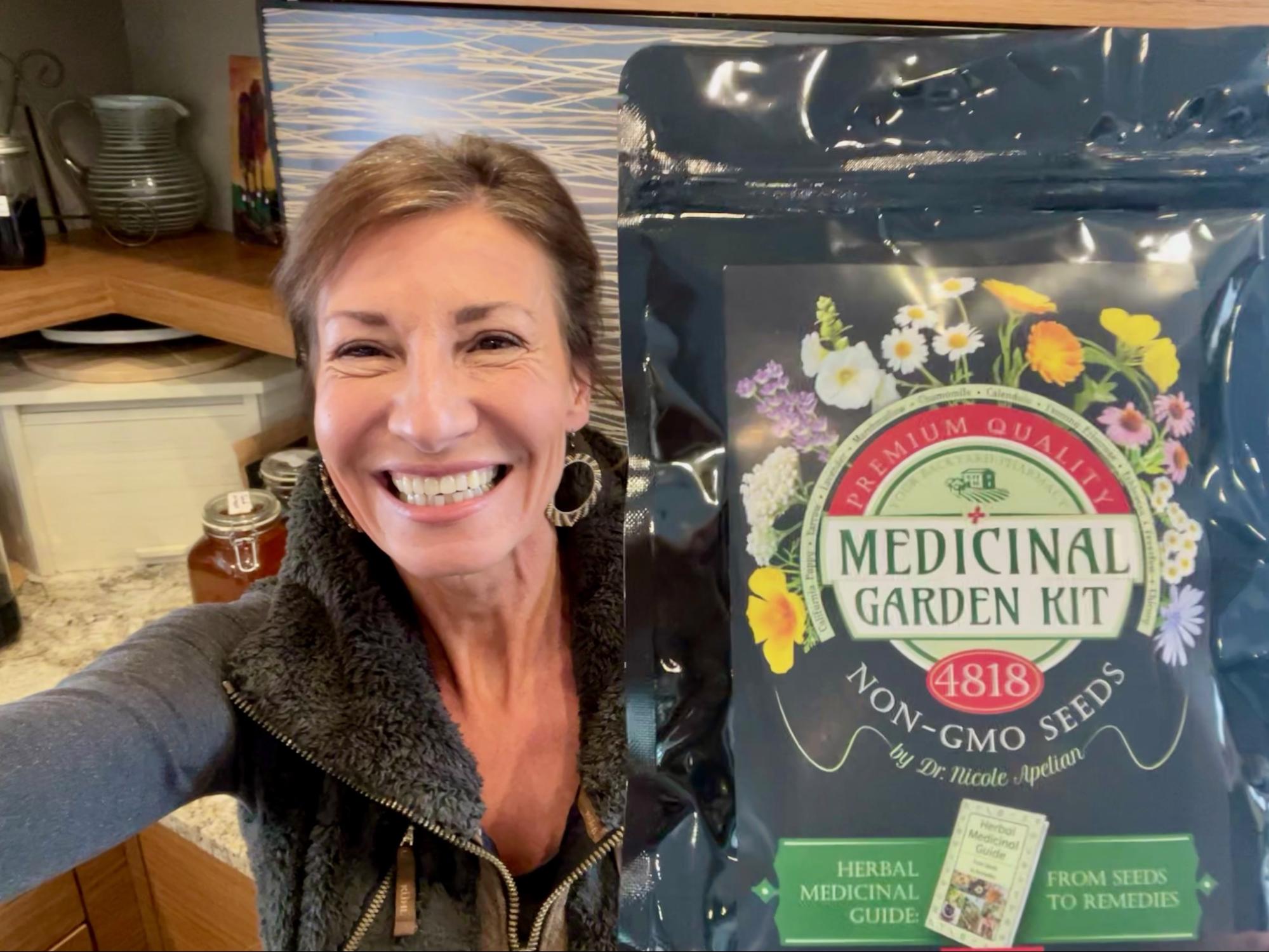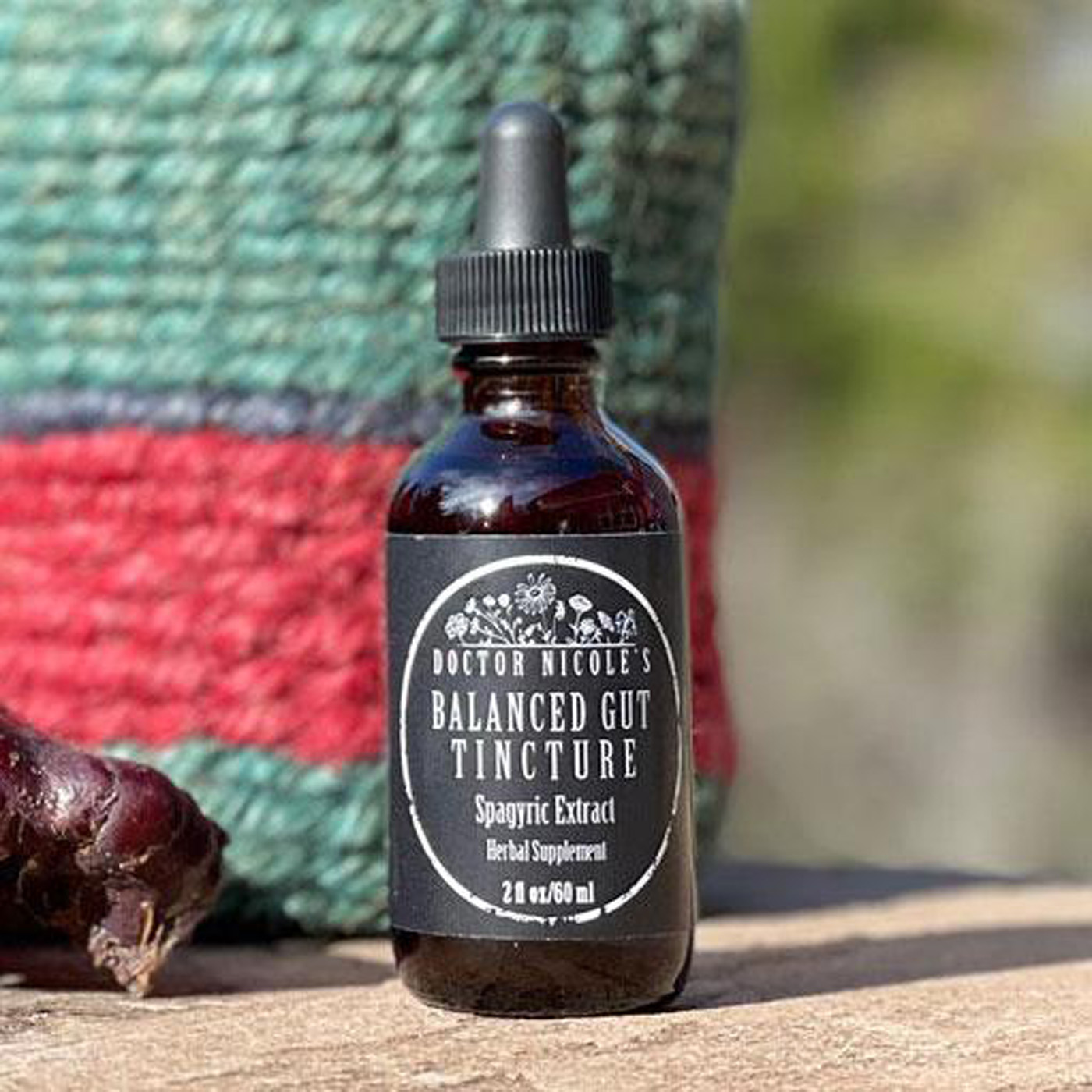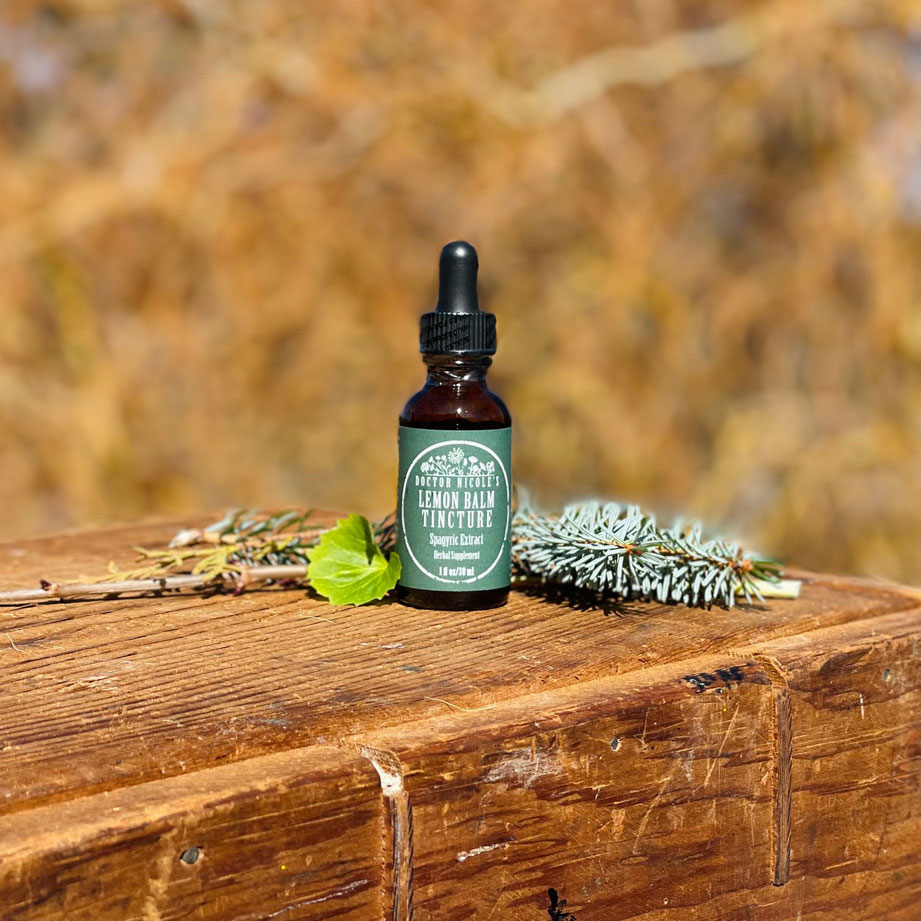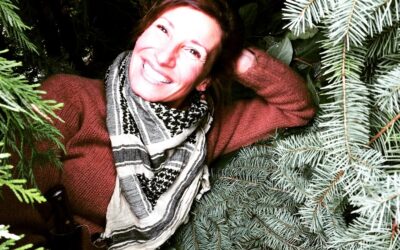Cultivating Beauty
Who doesn’t love a garden humming with activity from birds, bees, and butterflies? While many habitats support these delightful creatures, there are specific flowers, plants, and practices that help to encourage a green space brimming with life. Here are several tips that anyone can put into practice — even if you live in the city or aren’t an experienced gardener.
Attracting Bees, Butterflies, Moths, and Birds
Just like humans, our pollinator friends thrive in natural spaces that have abundant foraging opportunities. Not only are these environments beautiful with a range of blooming plants, trees, and shrubs, but they also help to preserve pollinator populations — which are vital for our ability to grow food. It’s important to include a wide variety of plants that have different bloom times to cover spring, summer, and fall. Focus on native and heirloom species (not hybrids) for ease of care, abundant yield, and the most attractive fragrance.
Trees & Shrubs. Many trees bloom fairly early in the springtime and are an excellent choice — cherry and other fruit trees come to mind. Other options include: blueberry, lilac, dogwood, poplar, and willow for nectar and pollen.
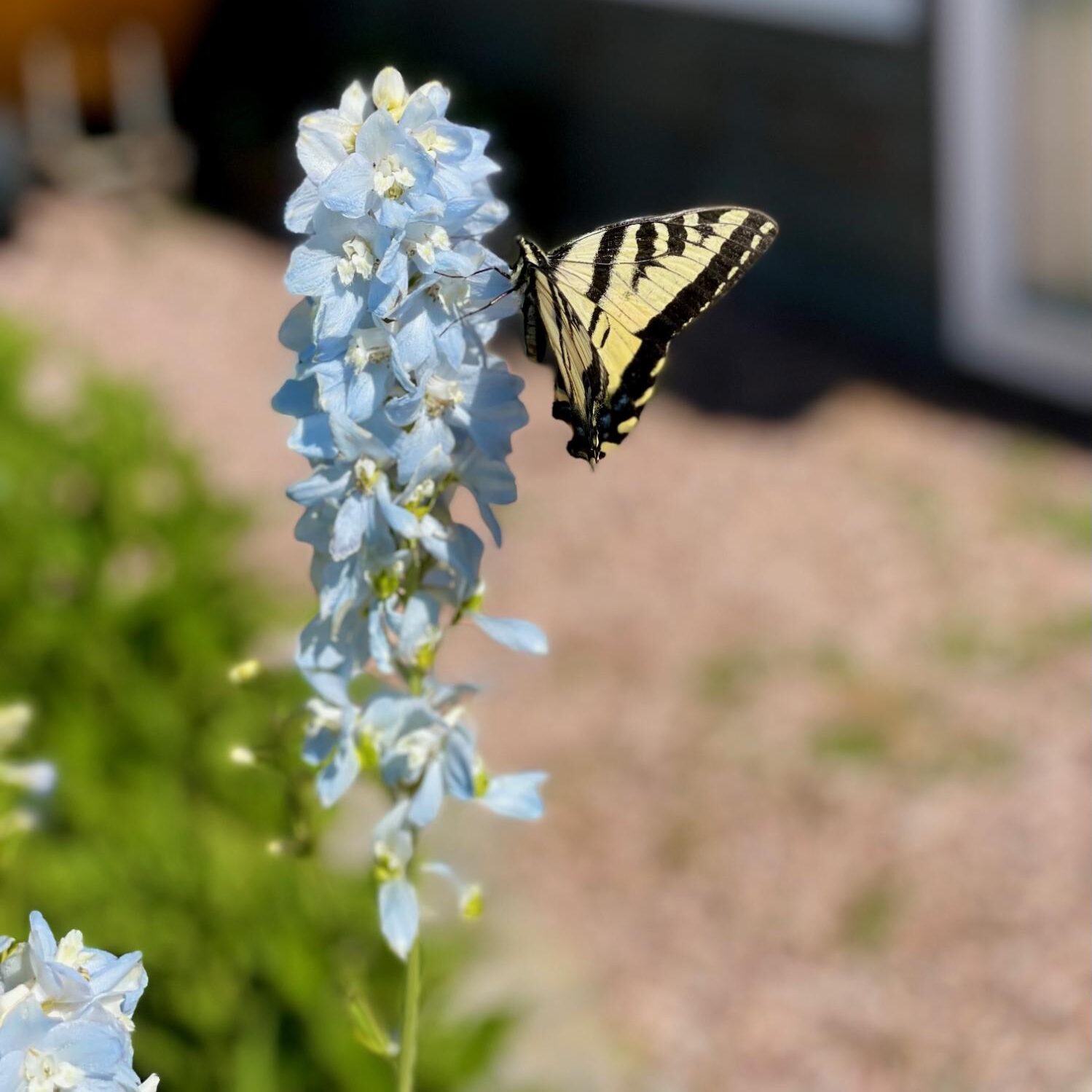
Flowers, Grasses, and Herbs. Always plant at least one patch of wildflowers for bee, butterfly, and moth habitat and food. Personally, I like to grow strips of wildflowers to create beautiful borders throughout my garden. Milkweed is a particular favorite with monarch butterflies and their larvae. Bee balm is attractive to (you guessed it) bees, along with butterflies.
Spring flowering plants, such as bulbs (daffodils, hyacinth, tulips, crocus), forget-me-nots, and primroses are all fantastic options. Summer flowers include: calendula, borage, sweet William, and clover. Opt for late-season flowers, such as aster, echinacea, and sedum. In the fall, do not deadhead sunflowers, coneflowers, and black-eyed Susans as the seeds provide important food for birds during the autumn and winter.
Flowering and scented perennials are one of the best plants to include in your garden as they are low maintenance and return on their own every year — plus, pollinators love them. Lavender, catnip, and different types of mint are easy to grow and beautiful to boot. Don’t forget about herbs! Thyme, oregano, and rosemary are good choices. Lemon balm is also exceptional — it’s quick growing, hearty, and makes a delicious, stress-relieving tea or tincture. (For a potent, ready-made lemon balm tincture, visit my apothecary).
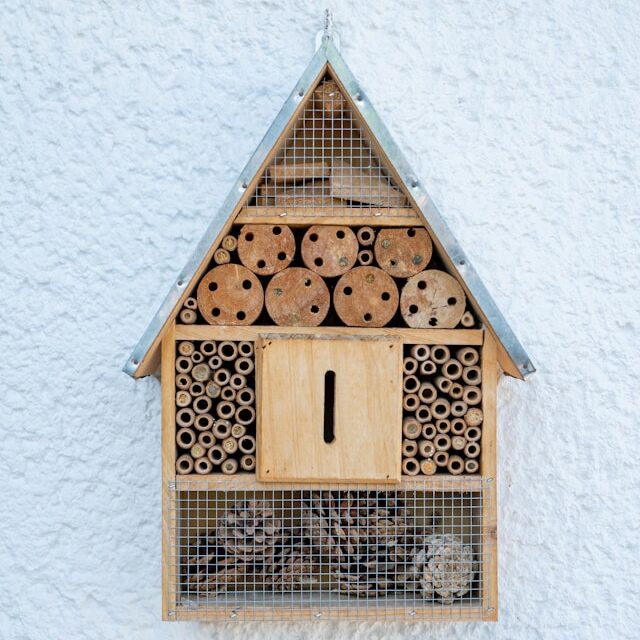
Home Sweet Home — For Bees. A bee house is a wonderful addition to your garden — you can either DIY or purchase at a local garden store. The sky’s the limit for a creative design, as long as it is made of thoroughly dry, untreated wood with a variety of widths of openings for different sizes of bees. The ideal is to have inside tube diameters of 5/16” to 3/8” for larger bees and 1/4″ for smaller leaf cutter bees to avoid pests taking up residence. Attach your bee house to a shed, post, or tree six feet up, away from doors and windows, facing south towards the sun. Placing it around bee balm, coneflower, or another favorite plant of the insect will encourage success.
Leave part of your garden wild. Pollinators of all stripes do best in unruly habitats with thickets, weeds, blooming clovers, and long grasses as it provides cover, nesting, and food. While our tendency is to cultivate a well-manicured garden, leaving an inconspicuous corner of your yard free to grow wild will give pollinators a leg-up. This also means leaving fallen branches, leaves, and logs/stumps alone.
Provide a water source. A shallow bird bath or fountain is a fantastic pollinator-friendly addition to your garden habitat. Make sure to place a medium-sized stone in the center for birds and insects to rest and dry themselves. Ideally, place it close to a tree or bush to give birds cover from predators.
What about bird feeders? While a feeder will certainly attract an abundance of fascinating birds, I only recommend it be used if you do not have a yard or garden space to cultivate. Why? Because it is better to provide a food source designed by nature. It will also support important habitats for a range of pollinators. Whenever possible, it’s best to work with the brilliant design of nature and the seasons for balanced harmony.
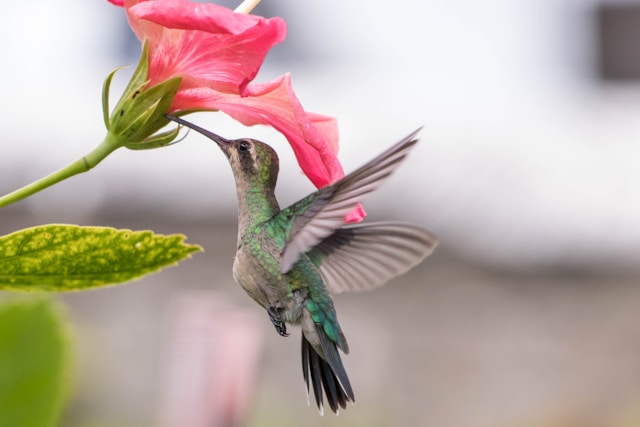
Additional Tips
Ditch garden chemicals. Needless to say, chemical herbicides and pesticides are exceptionally damaging to pollinators. One chemical in particular that comes to mind is glyphosate. This popular herbicide is not only exceedingly dangerous for bees and other pollinators, but also for humans. It persists in the environment for many years and has even been found in rainwater. Avoid it at all costs if you value your health, pollinator populations, and the natural world. There are many non-toxic options available, such as vinegar for weed control — either white or apple cider work well. If you need something stronger, hardware stores carry concentrated vinegar solutions. Don’t forget about the old-fashioned method: hand-pulling weeds.
Natural pest control. Pollinator-friendly pesticides include: neem oil (at 3% dilution); Epsom salt to deter slugs and snails when sprinkled at the base of the plant or diluted in a 1:1 ratio with water and sprayed directly on leaves for beetles; growing chrysanthemums in your garden or spraying tea made from the flowers onto plants to repel pests; and castile soap (at 2% dilution) can be sprayed onto leaves when pests have become problematic.
You can also introduce praying mantises and ladybugs into your garden. Both may be purchased at your local garden store or online. They are excellent at keeping your garden clear of unwanted pests.
Growing Your Own Backyard Apothecary
Many of the same plants that beautify the landscape and attract pollinators are also potent herbal medicines — and I have included ten of my favorites in our Medicinal Garden Seed Kit.
Imagine a herbal pharmacy growing right outside your door with fragrant flowers blooming throughout the spring and summer and into autumn. Blue-flowered chicory is outstanding for pain, digestion, adrenal fatigue, protecting the liver, and soothing the sinuses. Then there is yarrow, a powerful wound healer, insect repellent, digestive tonic, and menstrual cramp alleviator. Next is sunny California Poppy for deep sleep and calming the nervous system, including PTSD.
Marshmallow produces pale, blush-colored blooms that attract painted lady butterflies and other native pollinators, but the real magic is growing underground. Containing a sap-like substance called mucilage, marshmallow root soothes a range of digestive complaints — from stomach ulcers to constipation, IBS and Crohn’s disease. This is why I include marshmallow in my powerful Balanced Gut Blend. The herb also makes an excellent throat syrup and soothes stubborn coughs.
Cheerful chamomile heals wounds and skin ulcers; calms sciatica pain; makes an outstanding salve for eczema; and soothes an upset stomach. Evening Primrose is known to address bruises, wounds, and other skin complaints. The golden blooms of this plant help to balance the hormones and stabilize mood swings; calm coughing and soothe sore throats; and support the lungs. Interestingly, the flowers attract several species of hawk moths for pollinating large areas while you sleep.
Well-known lavender relaxes the nervous system; promotes healthy hair and scalp; and tackles fungal infections, acne, psoriasis, and cracked, dry skin. If you would like more woodland skipper and tiger swallowtail butterflies in your garden, this is the plant to grow. With distinctive purplish-pink blooms, echinacea is an herbal powerhouse for strengthening the immune system, cooling inflammation, and soothing aches and pains.
The final two plants included in the kit are calendula and feverfew. Make no mistake, both are essential for any herbal medicine chest. Calendula is exceptional for wounds, scars, burns, and skin complaints; sore throat and mouth ulcers; irritated eyes and stomach; and eczema and inflammation. Feverfew is considered “nature’s aspirin” for good reason as it addresses painful joints, inflammation, neuropathic pain, and migraines. You can also utilize it as a salve for eczema, rosacea, and acne.
Even if you do not have a green thumb, these plants are easy to grow! The 2,409 seeds included in my Medicinal Garden Kit are of the highest quality, non-GMO, heirloom stock. As perennials these plants will come back year-after-year, producing a bountiful harvest of medicinal herbs for making therapeutic tinctures, teas, decoctions, oils, salves, and much more — the included guide will show you how.
Don’t wait. If you live in the United States, order your Medicinal Garden Seed Kit today and begin the exciting journey of growing your own natural medicines!
Nicole Apelian


